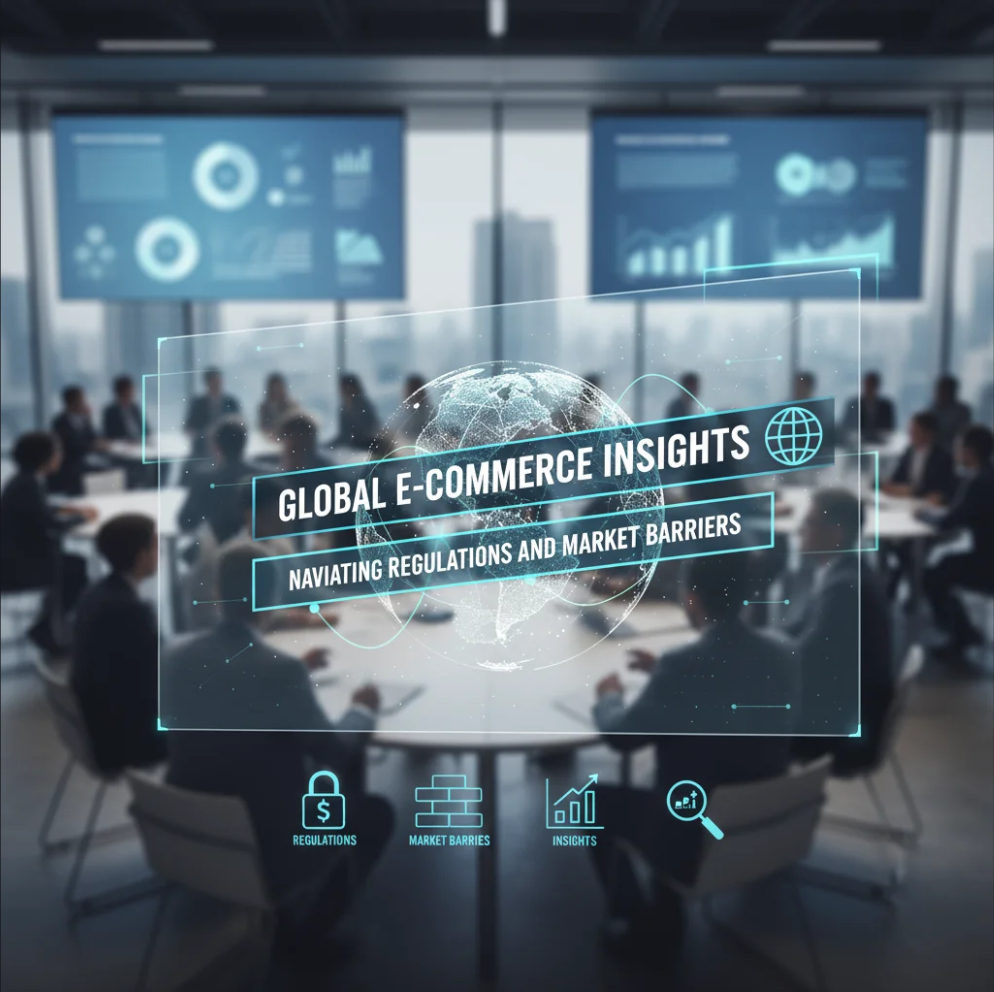Global E-Commerce Insights: Navigating Regulations and Market Barriers
The e-commerce landscape is expanding faster than ever, but with rapid growth comes complexity. Businesses venturing into global markets must navigate diverse regulations, trade policies, and market barriers to succeed. Understanding these challenges — and how to overcome them — is essential for sustained growth in today’s digital economy.
The Expanding Global E-Commerce Market
Global e-commerce has transformed the way businesses and consumers interact. With advancements in logistics, digital payments, and localization, companies can now reach customers anywhere. However, expanding internationally requires strategic adaptation to each market’s unique legal and cultural environment.
Key global trends in 2025 include:
- Rising cross-border transactions driven by digital-first consumers.
- Stricter data protection laws in major markets like the EU and Asia.
- Sustainability-focused policies affecting packaging, shipping, and sourcing.
1. Regulatory Frameworks: What Businesses Must Know
Each region has its own rules governing digital commerce. Failing to comply can result in fines, trade restrictions, or even bans.
a. Data Privacy & Protection
- Europe’s GDPR: Still the global gold standard, influencing privacy laws worldwide.
- Asia-Pacific: Countries like Japan, South Korea, and Singapore have updated privacy frameworks.
- US State Regulations: California’s CCPA continues to shape American data practices.
Businesses must ensure transparency in data collection, clear consent mechanisms, and compliance with regional policies.
b. Taxation and Duties
E-commerce companies face varying VAT, GST, and import duty systems. Digital service taxes (DSTs) are being introduced across Europe, India, and Latin America — making tax compliance more complex for global sellers.
c. Consumer Protection Laws
Regulations now emphasize refund policies, transparent pricing, and fair advertising. Global consumers expect not just convenience, but accountability from the brands they buy from.
2. Market Barriers and How to Overcome Them
Expanding globally is not just about following laws — it’s about understanding barriers that affect entry, operations, and customer relationships.
- Cultural Differences: Localize content, language, and payment options.
- Logistical Challenges: Partner with reliable local couriers or fulfillment centers.
- Payment Limitations: Support region-specific payment systems like Alipay, Paytm, or Klarna.
- Digital Trust: Building brand credibility through transparent communication and social proof.
Successful global e-commerce companies focus on local adaptation — tailoring their strategies to match the behavior and expectations of each target market.
3. The Role of Technology and Innovation
Emerging technologies are simplifying global trade:
- AI-driven compliance tools help automate tax and data regulation management.
- Blockchain tracking systems improve supply chain transparency.
- Smart logistics powered by predictive analytics enhance delivery efficiency.
Innovation is not just about growth — it’s about staying compliant while scaling fast.
4. Strategies for Success in Global E-Commerce
To thrive across borders, businesses should:
- Research local laws before launching in new regions.
- Build multilingual websites optimized for different markets.
- Invest in cybersecurity to protect customer data.
- Stay agile — global regulations evolve rapidly, and flexibility ensures longevity.
Conclusion
Global e-commerce is full of opportunity — but it’s also a regulatory maze. Businesses that understand regional laws, consumer expectations, and cultural nuances will stand out. By combining compliance with creativity, brands can break barriers and build lasting success in the world’s most competitive digital markets.














Post Comment